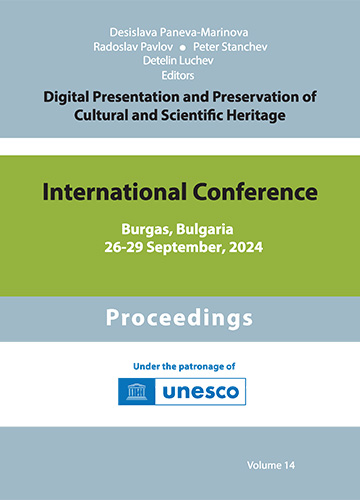Digitization of Cultural Heritage – a Service-Oriented Approach
DOI:
https://doi.org/10.55630/dipp.2016.6.11Keywords:
Cultural heritage digitization, Service-oriented computing, Organizational semiotics, Workflow managementAbstract
The digitization of Cultural Heritage assumes an interdisciplinary approach, collaborative knowledge co-creation, and distant communication. This can only be fulfilled by ICT means requiring in turn alignment between those who deliver the technical (IT) support and those who are in the role users. A Service-Oriented approach is considered adequate in this regard because of users’ composing services at high level (with underlying technical complexity remaining hidden) and developers’ considering the software components whose functionality is delivered through the services. All this requires however complex regulations to conform with. Semiotic norms in combination with workflows are considered in this regard. In this paper, we propose an approach based on Service-Oriented Computing and Organizational Semiotics, directed to Cultural Heritage digitization. The approach is partially illustrated by means of an example.References
B. Shishkov, M. van Sinderen, R. Cavalcante, 2010: Employees' Upskilling through Service-oriented Learning Environments. ICEIS’10 – Proc. of 12th Int. Conf. SciTePress.
M. Papazoglou, 2013: Web Services and SOA: Principles and Technology. Pearson
LiLa Project, Lib. of Labs, http://www.lila-project.org (2016)
B. Shishkov, 2005: Designing a Cultural Heritage Sector Broker Using SDBC. Int. Journal "Information Theories & Applications" Vol.11
B. Shishkov and . Janssen, 2016: Towards a Service-Oriented Architecture for eVoting. BMSD’16 – Proc. of 6th Int. Symp. on Business Modeling and Software Design. SciTe- Press.
Pasley, J., 2005. How BPEL and SOA are changing Web Services development. IEEE Internet Computing, Vol.9, Iss.3 (2005). IEEE Press
World Wide Web Consortium, 2016. Web Services Description Language 1.1, W3C Note, http://www.w3.org/TR/wsdl
Newcomer, E., 2002. Understanding Web services, XML, WSDL, SOAP and UDDI, Addison-Wesley. Boston.
Papazoglou, M.P., Kratz, B., 2006. A Business-Aware Web Services Transaction Model. In ICSOC’06, Int. Conf. on Service-Oriented Computing. Springer Berlin/Heidelberg.
Bosworth, A., 2001. Developing Web Services. Proc: 17th Int. Conf. on Data Engineering.
Alonso, G., F. Casati, H. Kuno, V. Machiraju, 2004. Web services, concepts, architectures and applications, Springer-Verlag. Berlin Heidelberg
B. Shishkov, J. L. G. Dietz, M. van Sinderen, 2007: Closing the Business-Application Gap in SOA - Challenges and Solution Directions. ICSOFT’07. INSTICC Press.
Wang, H., Zhang, H., 2006. Enabling enterprise resources reusability and interoperability through Web services. In ICEBE’06, IEEE Int. Conf. on e-Bus. Engineering. IEEE Press
Shishkov, B., Van Sinderen, M.J., Quartel, D., 2006. SOA-driven business-software alignment. In ICEBE’06, IEEE Int. Conference on e-Business Engineering. IEEE Press
Liu, K., 2000. Semiotics in Inf. Systems Engineering. Cambridge Univ. Press, Cambridge
Van der Aalst, W., 2011. Process Mining - Discovery, Conformance and Enhancement of Business Processes. Springer-Verlag, Berlin Heidelberg
Object Management Group, 2016. Website: http://www.omg.org




